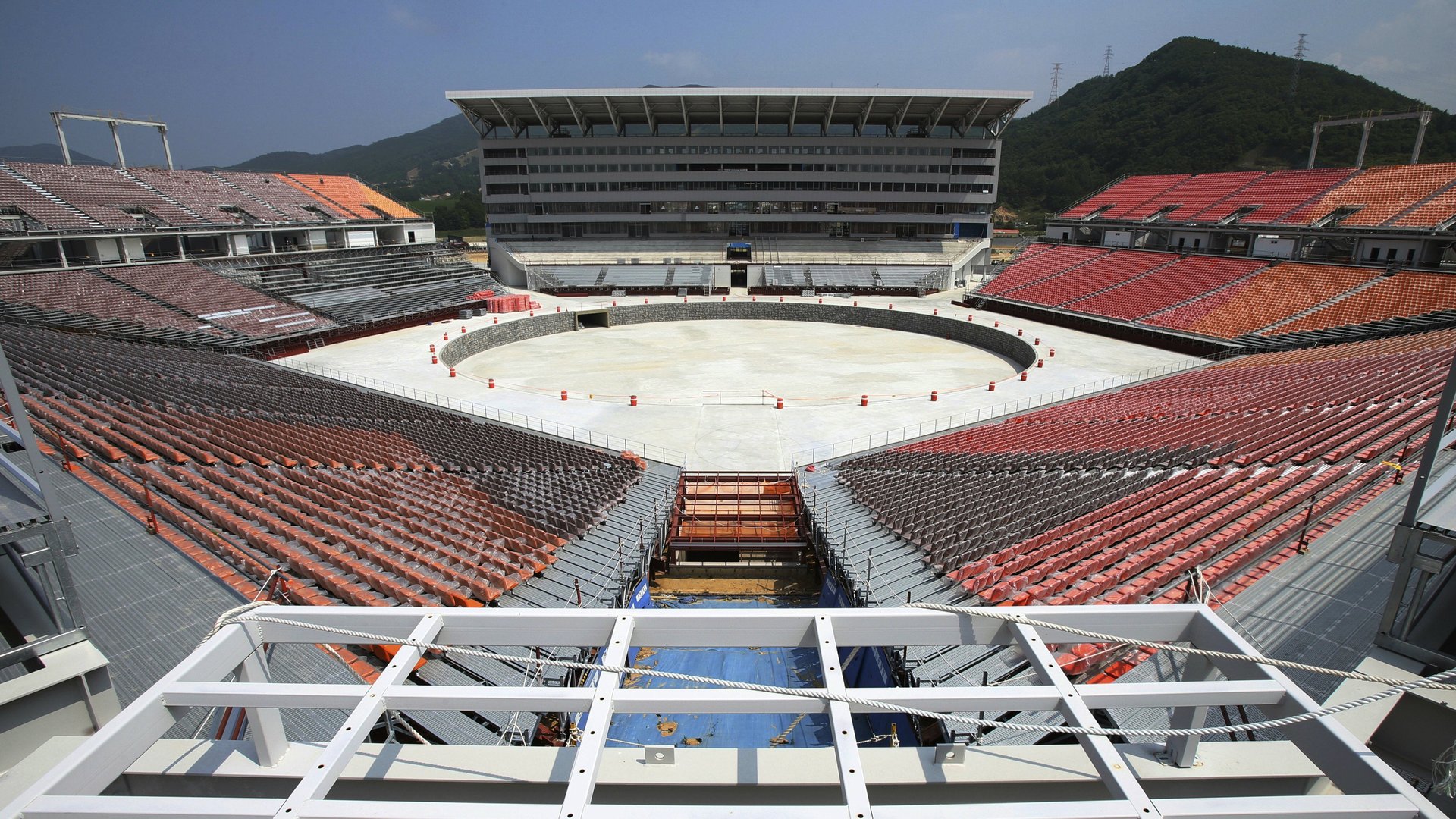South Korea’s $100 million Winter Olympics stadium will be used exactly four times
City governments that host the Olympics often face a dilemma—after spending hundreds of millions of dollars to build arenas and event spaces, what do you do with them once the games are over?


City governments that host the Olympics often face a dilemma—after spending hundreds of millions of dollars to build arenas and event spaces, what do you do with them once the games are over?
For South Korean officials mulling the future of the Pyeongchang Olympic Stadium, the answer is straightforward—just tear it down.
The stadium, costing 116 billion won ($109 million), will be used only four times in the course of the games—twice in February, for the opening and closing ceremonies of the Winter Olympics, and then twice in March, for the opening and closing ceremonies of the Paralympics. After that, it will be demolished, says the Associated Press.
With 35,000 seats, it’s one of several new facilities that the government has built to accommodate the games, according to Joongang Ilbo (link in Korean). There’s also the Gangneung Speed Skating Center (126.4 billion won), the Gangneung Ice Arena (134 billion won), the Gangneung Hockey Center (106.4 billion won), the Kwandong Hockey Center (62.7 billion won), the Jeongseon Alpine Center (203.4 billion won), and Olympic Sliding Center (114.1 billion won). The Olympic Village, which will house the athletes, is also new (link in Korean).
According to the Associated Press, local officials are stumped as to what to do with some of these other facilities once the games are over. Failed proposals include converting the speed skating arena into a gambling venue for betting (on skating) and turning one of the hockey centers into a home for a corporate hockey team.
During inspections of the facilities in August, officials from the International Olympic Committee warned the organizers that the facilities risked becoming ”white elephants” after the games.
It’s not uncommon for Olympics venues to fall into disarray once the games are over. In a best-case scenario, they become sporting facilities that get used frequently: The Centennial Olympic Stadium, built for the 1996 Summer Olympics in Atlanta, was converted into a home for the Atlanta Braves baseball team, where they resided for about 20 years.
But often the venues are neglected. After a major reconstruction of Rio de Janeiro’s decades-old Maracanã for the 2014 World Cup and 2016 Olympics, the facility quickly deteriorated, suffering a worm invasion and rampant looting. In Athens, sites built for the 2004 games also rapidly decayed and plans to turn the 10,000-unit Olympic Village into a public housing development with schools and hospitals became mired in bureaucracy.
Still, it’s unusual for the main Olympics stadium to be built and then knocked down as soon as the games are over. Among the long list of countries that have hosted games, France leads the way when it comes to bringing the wrecking ball. The Olympic Stadium for the 1968 Winter Games in Grenoble was torn down immediately after the competition, as was the Théâtre des Cérémonies that hosted the opening and closing spectacles of the 1992 Winter Games in Albertville.
Given Pyeongchang’s size—the county has a population of 45,000, just 10,000 more than seats in the Olympic Stadium—tearing the venue down might make more economic sense than paying to keep it up.
Hailey Jo contributed reporting.